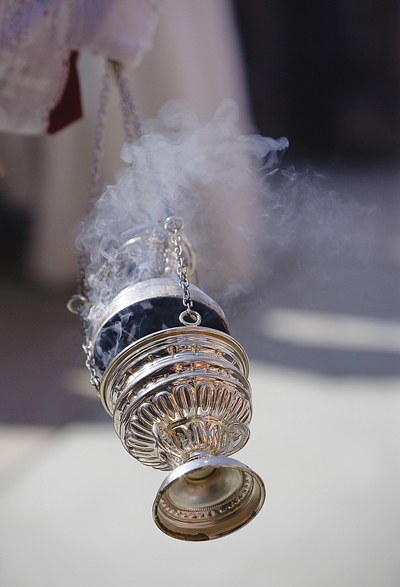
We live in strange times. Cigarette smoking is demonized, but recreational marijuana is decriminalized to the point that, according to the University of Michigan, daily usage is at a 35-year high on college campi.
Like secondhand smoke, usage of incense in liturgical celebrations may be irritating. However, since Vatican II its usage has been permitted at all Masses, particularly encouraged on Sundays, or on feast days of a parish’s patron saint.
Incense in the Judaic-Christian liturgical tradition dates back to the dawn of worship in the Temple of Jerusalem circa 900 B.C. It is also mentioned as part of some of the Hebrew sacrificial offerings that predate the temple as recorded in Numbers and Deuteronomy.
In ancient times incense was extracted from the bark of Terebinthian trees in India and Arabia. It was costly to import and became something only royalty, or the wealthy could afford.
When Constantine legalized Christianity, many privileges afforded to and by the wealthy were extended to the Church.
The early fourth century funeral procession of St. Peter of Alexandria is the oldest documented Christian use of incense. It was a public statement that, unlike popular belief, death could be entrance into eternal life through Jesus Christ who had ascended to God like the smoke of burning incense. In the Roman world this was a radical act that highlighted every member of the people of God as equally significant, a counter-cultural theological statement we would do well to rediscover.
Incense is meant to change the pace of the Liturgy into one of deeper contemplation and transcendence, recalling that earthly worship reflects the heavenly Liturgy so eloquently described in the Book of Revelation wherein incense is burned to make present the prayers of the holy ones.
With no incense, other than a kiss no special attention is called to the Altar that represents Christ the King-Cornerstone. Even Judas kissed Jesus! Without incense the bread and wine receive little affirmation of rising to God. When the gifts, then each person offering their own sacrifice is incensed it is obvious.
Incense is an authoritative statement that both our gifts and ourselves are accepted by God. This is an important declaration as Jesus Christ Himself actually comes into our midst. Clouds of sweet incense show hearts and gifts lifted “up to the Lord,” asking they be found as pleasing in God’s sight as the smelled aroma. Some monks now make “chokeless” incense. What a time to be alive!
As more and more law enforcement officers are murdered simply for wearing their uniforms, there is no question that the dignity of each person needs greater emphasis. “Lex orandi, lex credendi, lex vivendi” — the rule of praying is the rule of believing is the rule of living. The Church and its Liturgy bring heaven to earth in order to form the world in Christ’s image.
Like the Eucharist, holy smoke is fit for the royal people of God. May every earthly endeavor rise to be “holy” like ascending smoke.

